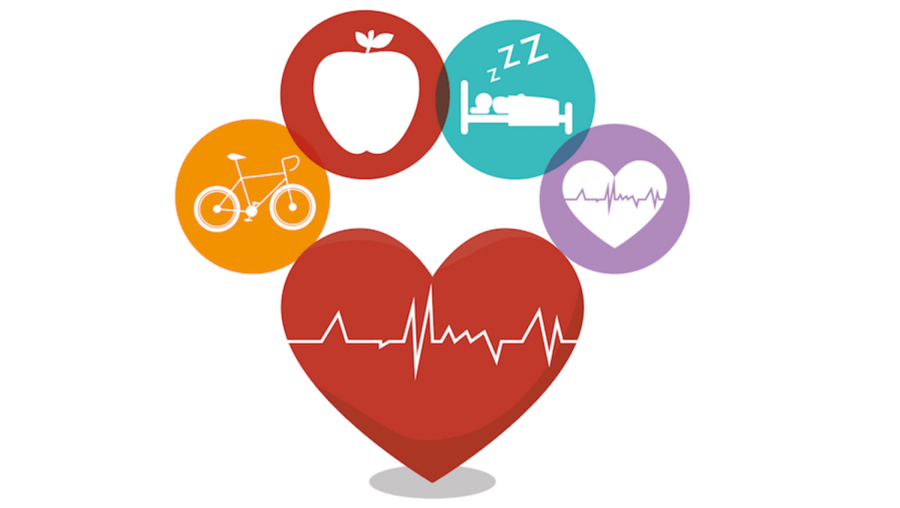Preventing Skin Cancer: A Holistic Guide to Sun Safety and Skin Health
Skin cancer represents a significant global health concern, with its incidence continuing to rise. The good news is that a substantial proportion of these cases are preventable through informed action and consistent protective measures. This article provides a comprehensive strategy for minimizing your risk, grounded in established health behavior theories and practical steps for safeguarding your skin.
To embark on this journey of prevention, it's essential to first define key concepts. Primary prevention involves actions taken to prevent a disease from occurring in the first place. In the context of skin cancer, this includes using sunscreen, wearing protective clothing, and limiting sun exposure. Secondary prevention focuses on early detection and intervention to prevent the progression of a disease. Regular self-exams and screenings by a dermatologist fall into this category. Risk factors are elements that increase the likelihood of developing a disease. These can include genetics, lifestyle choices, and environmental exposures.
Understanding Your Risk: The Foundation of Prevention
Effective prevention begins with a thorough understanding of your personal risk profile. Consider factors like your skin type (assessed using the Fitzpatrick scale), family history of skin cancer, the presence of numerous moles (nevi), and any history of severe sunburns. Fair-skinned individuals, those with a family history, or those with a history of significant sun exposure are at higher risk. This initial assessment aligns with the principles of personalized medicine, tailoring preventative strategies to your unique needs.
For example, someone with a strong family history of melanoma may benefit from more frequent skin checks and stricter sun avoidance practices. This targeted approach maximizes the effectiveness of prevention efforts.
1. Strategic Sun Avoidance and Shade Utilization
Minimizing direct sun exposure, particularly during peak UV radiation hours (typically between 10 a.m. and 4 p.m.), is paramount. Seeking shade under trees, umbrellas, or other structures provides a simple yet effective means of reducing UV exposure. This strategy leverages the concept of environmental modification, altering your surroundings to minimize risk.
Applying this practically, consider scheduling outdoor activities for early morning or late afternoon when UV radiation is less intense. Even on cloudy days, UV radiation can penetrate, so caution is always advised.
2. Protective Clothing: Your First Line of Defense
Wearing protective clothing acts as a tangible barrier against UV radiation. Long sleeves, long pants, tightly woven fabrics, wide-brimmed hats, and UV-protective sunglasses significantly reduce skin exposure. This aligns with the Transtheoretical Model (Stages of Change), providing an easily implementable behavior change to enhance sun protection.
The effectiveness of protective clothing can be amplified by selecting garments with an Ultraviolet Protection Factor (UPF) rating, which indicates the level of UV radiation blocked by the fabric.
3. Sunscreen: Broad-Spectrum Protection is Key
Applying a broad-spectrum sunscreen with a Sun Protection Factor (SPF) of 30 or higher is a cornerstone of sun safety. "Broad-spectrum" signifies protection against both UVA and UVB rays, both of which contribute to skin cancer risk. Sunscreen application should be generous, covering all exposed skin, and reapplied every two hours, or more frequently after swimming or sweating, as recommended by the American Academy of Dermatology. This represents a critical behavioral intervention rooted in primary prevention principles.
Integrating sunscreen into your daily routine, similar to brushing your teeth, increases the likelihood of consistent use. Consider keeping a bottle of sunscreen in your car, at your desk, and in your beach bag for easy access. When thinking about overall well-being, don't underestimate the importance of Mindful Snacking: Your Path to Healthy Weight and Wellbeing for optimal overall health.
4. Hydration and Skin Health
Adequate hydration supports overall skin health and may enhance its resilience to sun damage. While not a direct preventative measure against UV radiation, maintaining optimal hydration promotes healthy skin cell function and repair mechanisms. This underscores the interconnectedness of bodily systems in maintaining health.
5. Regular Skin Self-Exams: Early Detection Saves Lives
Performing regular skin self-examinations, ideally monthly, allows for early detection of suspicious moles or lesions. Familiarize yourself with the ABCDEs of melanoma: Asymmetry, Border irregularity, Color variation, Diameter greater than 6mm, and Evolving/changing. Early detection significantly improves treatment outcomes and survivability, aligning with tertiary prevention methods.
Consider using a smartphone app to track moles and monitor changes over time. These tools can aid in early detection and prompt consultation with a dermatologist.
6. The Importance of Eye Protection
Sunglasses offering 100% UVA and UVB protection safeguard the eyes from harmful UV radiation, reducing the risk of cataracts and other eye problems. Look for sunglasses labeled with "UV400" protection, which indicates they block 100% of UV rays.
7. Protecting Our Children: A Shared Responsibility
Children are particularly vulnerable to sun damage due to their thinner skin and developing immune systems. Parents and caregivers should prioritize their sun protection through clothing, sunscreen application, and shade seeking. This represents an element of social responsibility within the broader framework of public health.
Lead by example by practicing sun-safe behaviors yourself. Children are more likely to adopt these practices if they see their parents and caregivers doing so.
8. Community Engagement and Education
Educating others about skin cancer prevention promotes community-wide awareness and collective action. Support public health campaigns and share information with friends and family. Shifting societal norms around sun protection requires a concerted effort from individuals and organizations alike. This is very similar to Data-Driven Social Services: A Global Perspective on Effective Management that needs a collective awareness and action towards community development, in this case it is health issue.
9. Balancing Sun Exposure and Lifestyle Modification
Sun protection does not equate to complete sun avoidance. It involves making conscious choices to balance sun exposure with preventive measures. Vitamin D, essential for bone health, is synthesized in the skin upon exposure to sunlight. However, this can be achieved with limited sun exposure, typically a few minutes per day, without significantly increasing skin cancer risk. This underscores the importance of sustainable lifestyle changes for long-term health.
Conclusions and Recommendations:
Preventing skin cancer requires a multifaceted approach that integrates individual responsibility with broader public health initiatives. By understanding your personal risk factors, implementing consistent protective behaviors, and staying informed about the latest research and recommendations, you can significantly reduce your risk. This article highlights the critical role of sun avoidance, protective clothing, sunscreen use, regular skin self-exams, and community education in promoting sun-safe behaviors. Moreover, future studies should focus on creating culturally relevant treatments, assessing the efficacy of diverse communication approaches, and investigating cutting-edge technology solutions for sun protection. For instance, innovations like UV-detecting clothing and personalized sunscreen recommendations based on skin type and UV exposure levels hold great promise. Integrating strategies for mental and emotional health, like those explored in Navigating Emotional Triggers: A Compassionate Guide to Stronger Relationships, could also enhance adherence to long-term preventative behaviors by mitigating stress-related risk factors. Continued education and community engagement are essential for fostering widespread acceptance of sun-safe practices and reducing the global burden of skin cancer. A comprehensive strategy that combines individual efforts with broader social and environmental improvements is essential for the long-term success of skin cancer prevention. Further research can also explore the potential of incorporating nutrition for skin health, similar to how Nutrition for Restful Sleep: A Dietitian's Guide to Foods That Help You Sleep Better enhances sleep quality through dietary choices, to bolster the skin's natural defenses against UV damage. By embracing these approaches, we can collectively work toward a future with reduced rates of skin cancer and improved skin health for all.
Reader Pool: How can technology be further leveraged to personalize and enhance skin cancer prevention efforts on a global scale?
Related Articles:
- Mindful Snacking: Your Path to Healthy Weight and Wellbeing
- Data-Driven Social Services: A Global Perspective on Effective Management
- Navigating Emotional Triggers: A Compassionate Guide to Stronger Relationships
- Nutrition for Restful Sleep: A Dietitian's Guide to Foods That Help You Sleep Better
- Unlock Your Potential: The Comprehensive Health Perks of Regular Exercise






